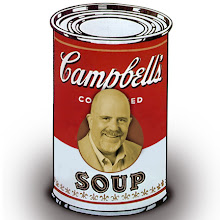One of the best programs that I attended at Thursday's
San Antonio Innotech was the one held by
Ted Terrazas on electronic medical records. Sadly, his event was not well attended, but the information given about electronic medical records was succinct and on point.
To wit, Terrazas' 45-minute program detailed the issues of why there's a need for a standard electronic medical record. As a former Air Force medical administrator, Terrazas, the chief executive officer of
THI , has been working in the industry. His talk reflected his experience and the need for an EMR.
On a personal point, my wife has had issues with one of her prescriptions at the local
Walgreen's pharmacy. When she needed to renew it, the pharmacy has sent her doctor a fax requesting them to call back to confirm a refill on her meds.
As anyone who has sent hundreds of faxes to news outlets, I learned a long time ago that it's best to call back to confirm that the recipient got the correspondence. After a week of waiting and my wife threatening to move her prescriptions to
HEB or
CVS , the pharmacy team admitted that they didn't follow up with a phone call. They assumed that the doctor's admin team would call back to confirm a refill.
It took the threat of losing business to cause the local Walgreen's to recheck the fax number. Ironically, the Walgreen's had the wrong fax number.
If Barack Obama's $19 billion in stimulus to promote the efficiency of medical IT systems is going to work, it's important that the government and its IT folks set up an open standard for software. Having worked in the security industry as a publicist, I have heard experts in that arena discuss how some companies created a close software architecture that required extra funding to get a work around for some solutions.
Terrazas addressed the need for the open standard in his talk on Thursday, but we need more in the industry to promote it. As well, there is a tremendous learning curve to help everyone adapt to the upcoming changes in what is termed an "EMR."
As someone who is sometime reluctant to change, I know some people will not readily take to a change in their processes. It will take a combination of software architects, change management experts and those who understand the dynamics of how people work with software to truly create the change needed to make this program work.
And sadly, that will take time. Until that happens, people like my wife have to deal with an antiquated system to get their prescriptions refilled.





No comments:
Post a Comment